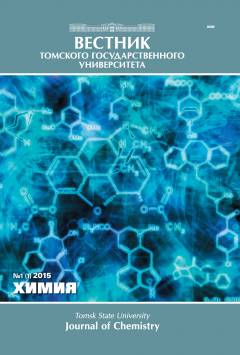Influence of nitinol bulk structure and its surface layer composition on the regularities of oxidation during heating in air
The use of alloys based on nitinol TiNi in mechanical engineering, medicine, and elsewhere is caused by characteristics of the alloys such as shape memory, fatigue life, high corrosion resistance, and biochemical stability. Nanostructuring TiNi using severe plastic deformation increases the ultimate strength and yield strength while preserving the ductility of the material. But the influence of the fine-grained structure of plastically deformed TiNi on the parameters of oxidation has not been studied. The influence of protective heat-resistant coatings on the resistance of the alloy surface to oxidation is not systematically investigated. In this regard, the aim of the work is to study the influence of submicrocrystalline structure and the presence of protective silicon-containing surface layer on features of TiNi oxidation when heated in air. Nitinol Ti49.2Ni50.8 and an alloy Ti50.0Ni47.3Fe2.? were used to obtain the submicrocrystalline by means of equal-channel angular pressing. Two samples of the alloy with submicrocrystalline structure with average grain size dave=0.6 and 0.25 лm were obtained. Formation of protective surface layers on TiNi was performed by surface modification with silicon using ion-beam and plasma immersion processing. TiNi samples with Si-coating up to 300 nm thick and without the continuous coating were produced. The oxidation process of the samples at heating in air was studied by differential thermal analysis. The composition and structure of starting materials and oxidation products were investigated using a complex of physical and physico-chemical methods. It was shown that the submicrocrystalline structure of TiNi-Fe (dave= 0.25 /m) improved the stability of the alloy to oxidation at t > 600 C as compared to the coarse-grained alloy structure, which was revealed by the lessening of the increase in values of the samples due to oxidation and increase in activation energy of the process. Slowing of the process of fine-grained alloy oxidation was explained by formation of a dense crystalline surface oxide layer that enhanced the diffusion limitations of the process. A thin silicon-containing layer on the TiNi surface with maximum concentration of Si 50 at.% in the surface layer at 5-40 nm depth significantly improved the heat resistance of the alloy in the temperature region t < 500 °C. Formation of silicon coatings up to 300 nm thick reduced the resistance of the alloy surface layers to oxidation at high temperatures due to exfoliation and cracking of the Si-coating and formation of heterogeneous morphology and composition of the surface layers.
Keywords
никелид титана, крупнозернистая и субмикрокристаллическая структура, модифицирование кремнием, окисление, никелид титана, крупнозернистая и субмикрокристаллическая структура, модифицирование кремнием, окисление, nitinol, coarse-grained and submicrocrystalline structure, modifying the silicon, oxidationAuthors
| Name | Organization | |
| Abramova Polina V. | Tomsk Polytechnic University | bozhkopv@tpu.ru |
| Korshunov Andrej V. | Tomsk Polytechnic University | korshunov@tpu.ru |
| Lotkov Aleksandr I. | Institute of Strength Physics and Materials Science of Siberian Branch of Russian Academy of Sciences | lotkov@ispms.tsc.ru |
| Kashin Oleg A. | Institute of Strength Physics and Materials Science of Siberian Branch of Russian Academy of Sciences | okashin@ispms.tsc.ru |
References
_12_2016_1486523462.jpg)
Influence of nitinol bulk structure and its surface layer composition on the regularities of oxidation during heating in air | Vestnik Tomskogo gosudarstvennogo universiteta. Chimia – Tomsk State University Journal of Chemistry. 2016. № 4(6). DOI: 10.17223/24135542/6/1
